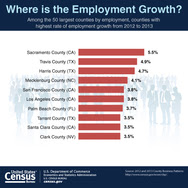In 1978, a joint congressional resolution established Asian/Pacific American Heritage Week. The first 10 days of May were chosen to coincide with two important milestones in Asian/Pacific American history: the arrival in the United States of the first Japanese immigrants (May 7, 1843) and contributions of Chinese workers to the building of the transcontinental railroad, completed May 10, 1869.
In 1992, Congress expanded the observance to a month-long celebration. Per a 1997 U.S. Office of Management and Budget directive, the Asian or Pacific Islander racial category was separated into two categories: one being Asian and the other Native Hawaiian and Other Pacific Islander. Thus, this Facts for Features contains a section for each.
Asians
19.4 million
The estimated number of U.S. residents in 2013 who were Asian, either one race or in combination with one or more additional races. Source: 2013 Population Estimates <http://factfinder.census.gov/
6.1 million
The Asian alone or in combination population in California in 2013. The state had the largest Asian population, followed by New York (1.8 million). The Asian alone population represented 37.7 percent of the total population in Hawaii. Source: 2013 Population Estimates <http://factfinder.census.gov/




